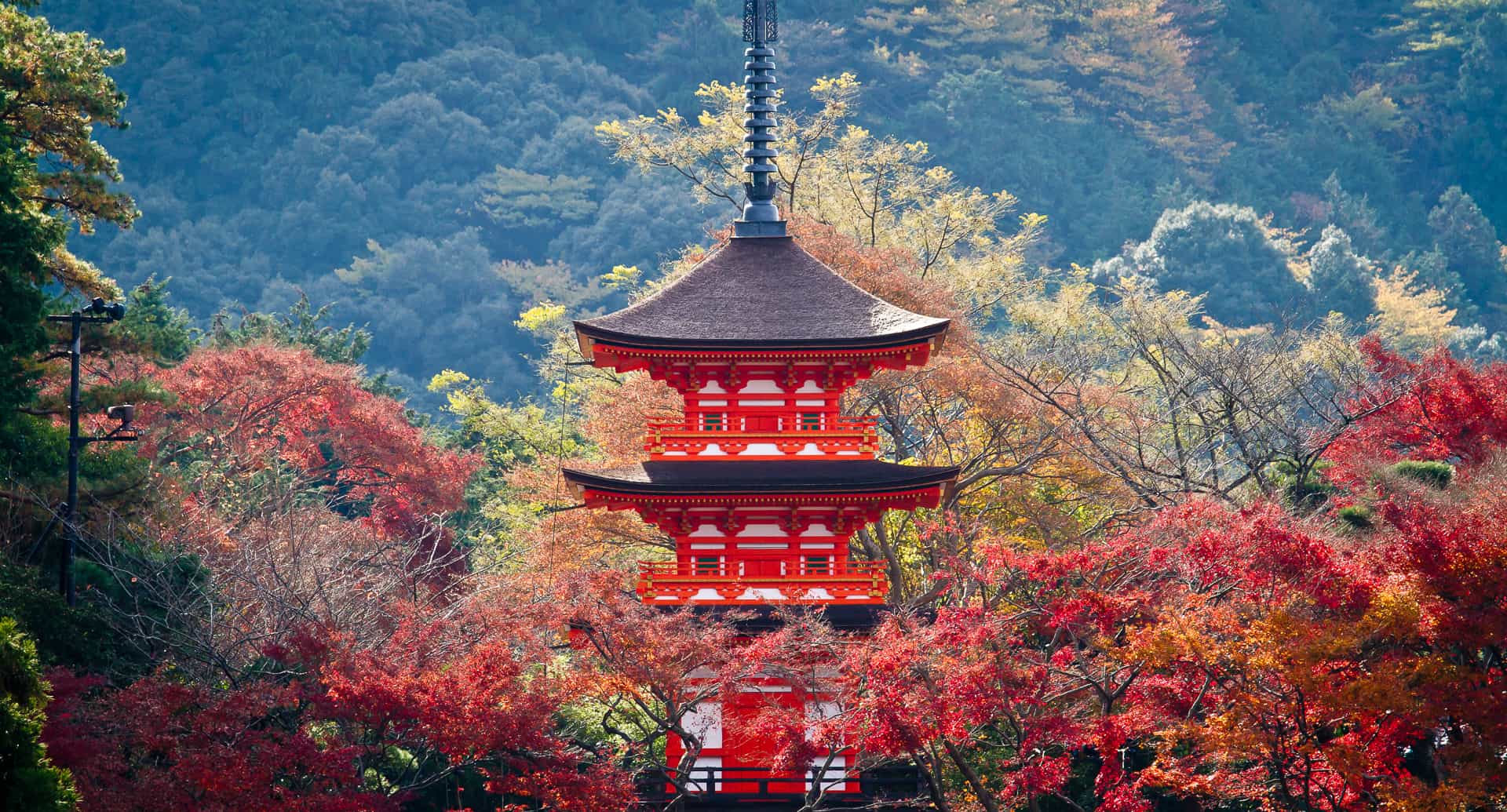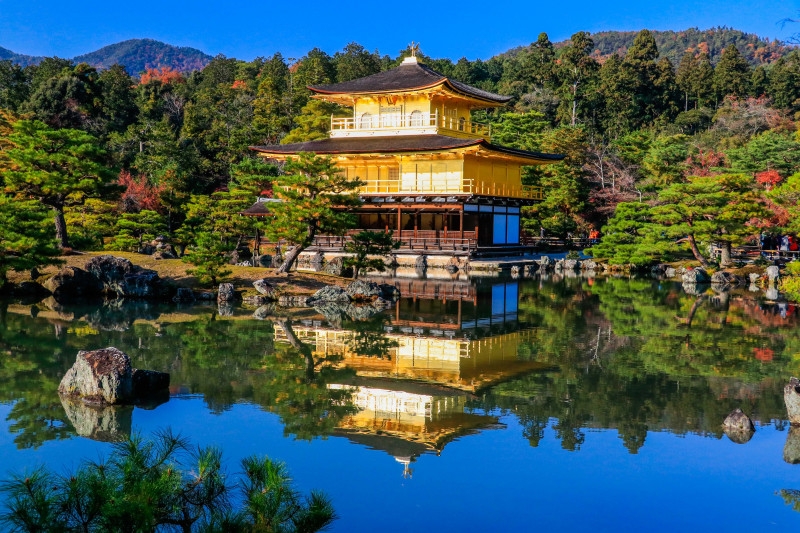Kyoto, the former imperial capital of Japan, held this prestigious status for over a millennium, beginning in 794. Often referred to as the “Western Capital,” it was intricately designed, drawing inspiration from the grand cities of China. Remarkably, Kyoto remained unscathed by the devastation of World War II, preserving a living testament to Japan’s rich history and prosperity. Its cobblestone streets carry echoes of the past, adorned with 11th-century townhouses, elegant geisha in white attire, and centuries-old temples. Throughout the year, Kyoto’s beauty shines through, whether it’s the enchanting sight of the snow-covered Golden Pavilion, the Path of Philosophy adorned with cherry blossoms, or the vivid red maple trees at Kiyomizu-dera temple.
Must-see Attractions in Kyoto

Kyoto’s temples, shrines, and gardens offer a glimpse into ancient Japan’s glory. Kiyomizu-dera temple, nestled halfway up Otowa Mountain, provides breathtaking vistas of Kyoto and the surrounding mountains from its 1,200-year-old balcony. Fushimi Inari-taisha, Kyoto’s revered Shinto shrine, is instantly recognizable for its impressive array of more than 10,000 crimson gates winding up Inari Mountain for 2.5 miles. At the heart of Kyoto lies the legacy of Japan’s feudal ruling class, with Nijo Castle, constructed by Shogun Tokugawa Ieyasu, and the elegant Imperial Palace, once the residence of Japan’s emperors.
Culinary Delights in Kyoto
Kyoto’s culinary artistry not only tantalizes the taste buds but also pleases the eye with its visual appeal. Kyo-ryori, Kyoto cuisine, stands as one of Japan’s most refined culinary traditions, characterized by a focus on artistry and seasonal ingredients. Kyo-ryori encompasses yusoku (Imperial court cuisine), kaiseki (multi-course meals accompanying tea ceremonies), shojin ryori (Buddhist monk cuisine), and obanzai (traditional cooking). Kyoto’s exquisite cuisine invites you to savor it in serene gardens, on tatami-mat floors, and within the city’s temples and eateries.
Culture and Heritage in Kyoto
Kyoto’s cultural heritage thrives, having flourished as Japan’s capital for a millennium. Here, Buddhist temples harmoniously coexist with Shinto shrines, and the graceful geisha continue to perform. The city and its people exude a refined elegance, with Japanese hospitality and courtesy considered unparalleled. Time-honored traditions like Kabuki and Noh theater, as well as the tea ceremony known as chado, are still revered. Kyoto’s mesmerizing architecture and landscapes have left an indelible mark on global design. Families traveling with children can explore the World of Samurai through AFAR’s partner Context Travel, guided by a historian who caters to young learners, visiting castles, temples, and rock gardens.
Shopping in Kyoto
Hidden shops line Kyoto’s narrow streets, and centuries-old markets are tucked within temple gates. Kobo-san and Tenjin-san, the city’s two largest outdoor markets, offer treasures like antiques, kimonos, and delectable Japanese street food. These monthly markets are bustling and vibrant, perfect for people-watching. Nishiki Market, Kyoto’s largest food market, often dubbed “Kyoto’s pantry,” has been a culinary cornerstone for over 400 years, supplying many of the city’s restaurants. Department stores such as Takashimaya and Marui grace Shijo-dori avenue. Across the Kamo River, near the Yasaka Shrine, boutique shops cater to tourists looking for clothing and dining options.
Practical Information
Late autumn is the prime time to witness the vibrant foliage, while mid-March and April are ideal for cherry blossom viewing. Visitors can arrive at Kansai International Airport and navigate Kyoto via buses, bikes, trains, and subways. Travelers planning to explore the country by bullet train may consider the Japan Rail Pass, available at a discount when purchased outside Japan. The official language is Japanese, and the currency is yen, with tipping not being customary. Electricity operates at 100 volts AC, compatible with most U.S. appliances, though note that most outlets have two prongs, necessitating adapters readily available at major electronics retailers.

